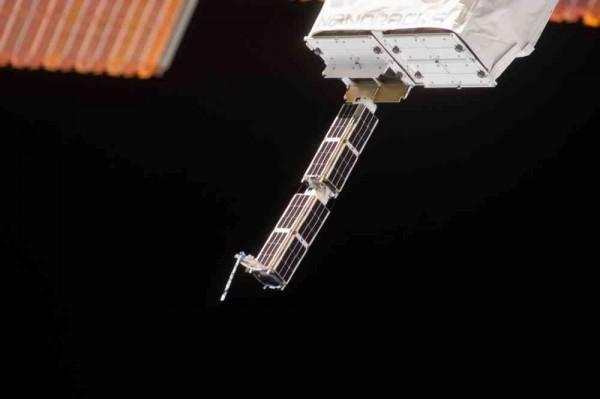NASA IceCube hunts climate change and cost savings
NASA will take advantage of new tiny satellite technology, CubeSats, to test a new weather-monitoring technology that could help unlock the secrets of climate change, the space agency has announced. IceCube – also known as Earth-1, is around a foot long and four inches wide, and takes advantage of satellite standardization expected to make launching orbiting probes faster and more cost-effective.
Dubbed CubeSats, the satellites are cubes roughly 4-inches along each edge and weighing around a pound. By fixing the dimensions, the launch equipment can be standardized, making deployment more straightforward.
NASA released a flock of CubeSats from the International Space Station back in February, using a customized robotic arm.

IceCube is the handiwork of a team at NASA's Goddard Flight Center, and will be used to test the potential of a new 874-gigahertz submillimeter-wave receiver. Designed to fill in gaps in scanning in the middle and upper troposphere, the sensor can penetrate the ice clouds there which are opaque to infrared and visible-light sensors.
With the new data, and the real-world testing results of IceCube and its sensors, researchers hope to build a new instrument that can monitor global atmospheric ice on a daily basis. From that, conclusions about the hydrologic and energy cycles can be drawn, such as figuring out why the ice forms and how it changes the amount of solar energy reflected away from Earth.
IceCube will be a so-called 3U CubeSat, comprising three blocks fixed together. While the standardized form-factor will make deployment easier, it does introduce other issues such as power. While the sensors have to be precise enough to give exacting measurements of the ice, they can't be so power-demanding as to drain the satellite too quickly.
NASA and the research team's hope is that eventually more off-the-shelf components will be validated for space use, trimming development costs in the process. Smartphones have already been used as satellite "brains", such as the HTC Nexus One-based "PhoneSats" launched earlier this year.
SOURCE NASA
